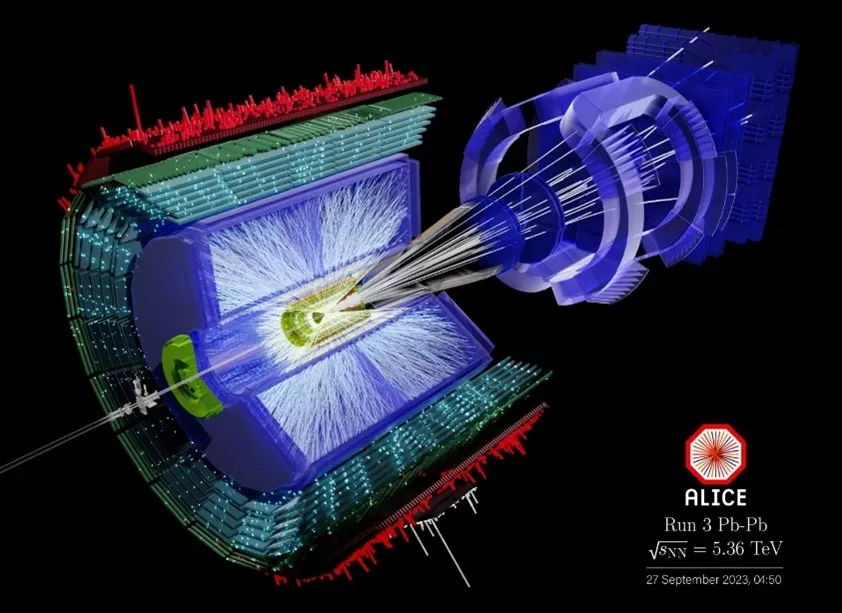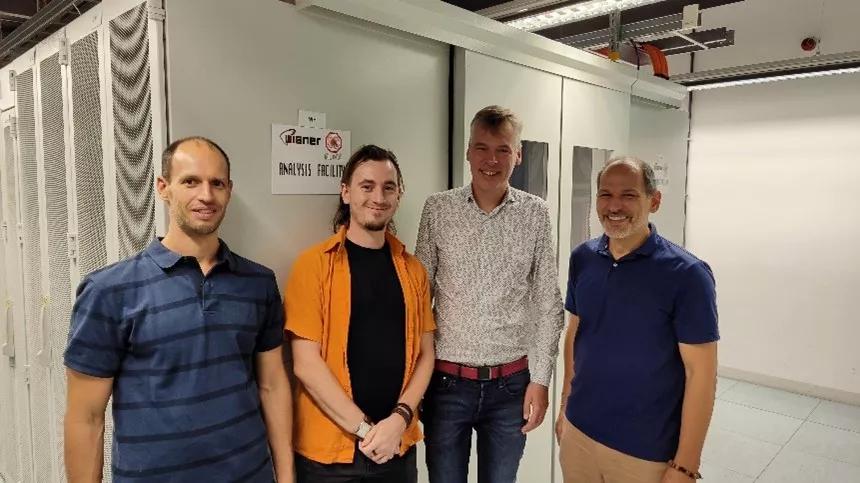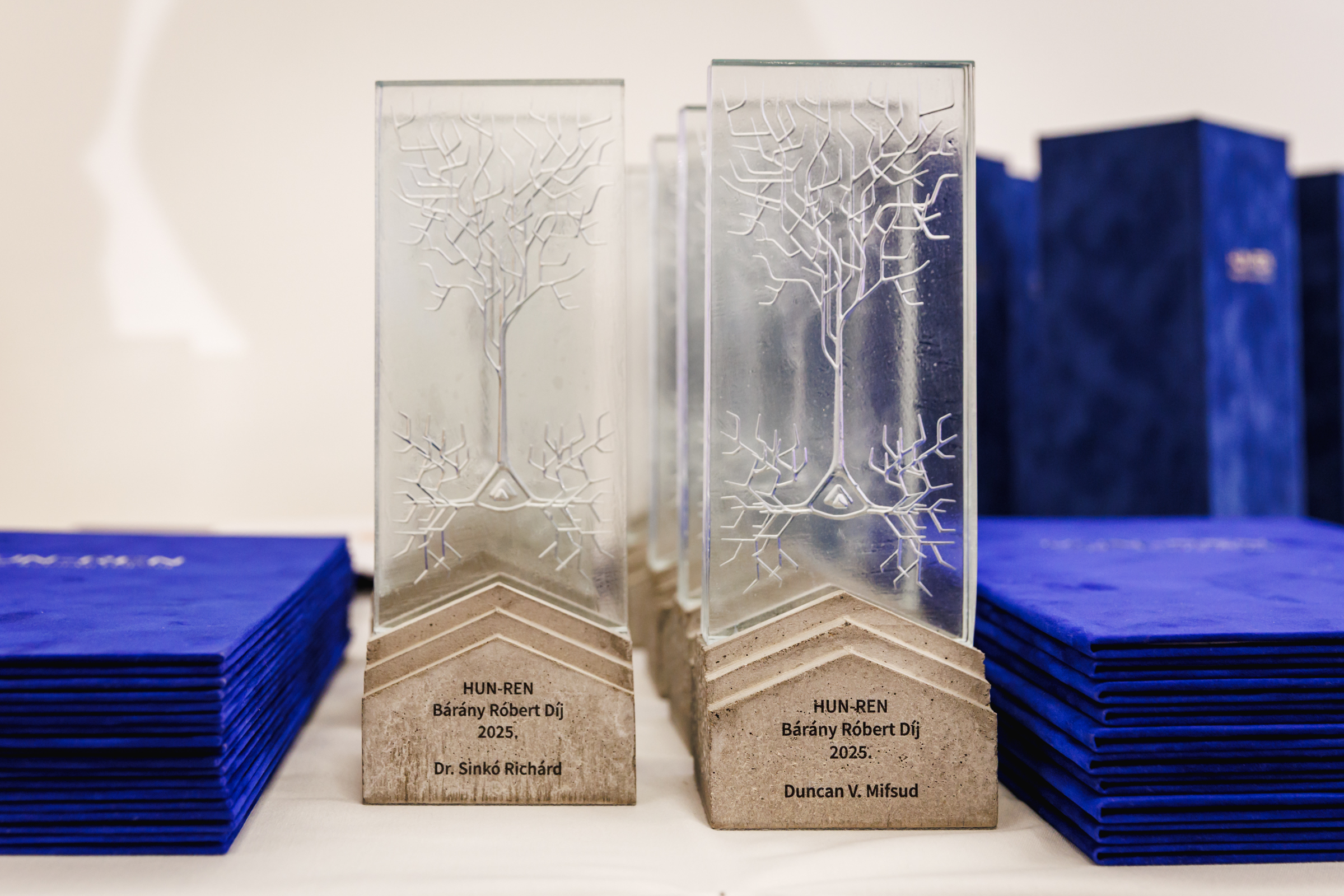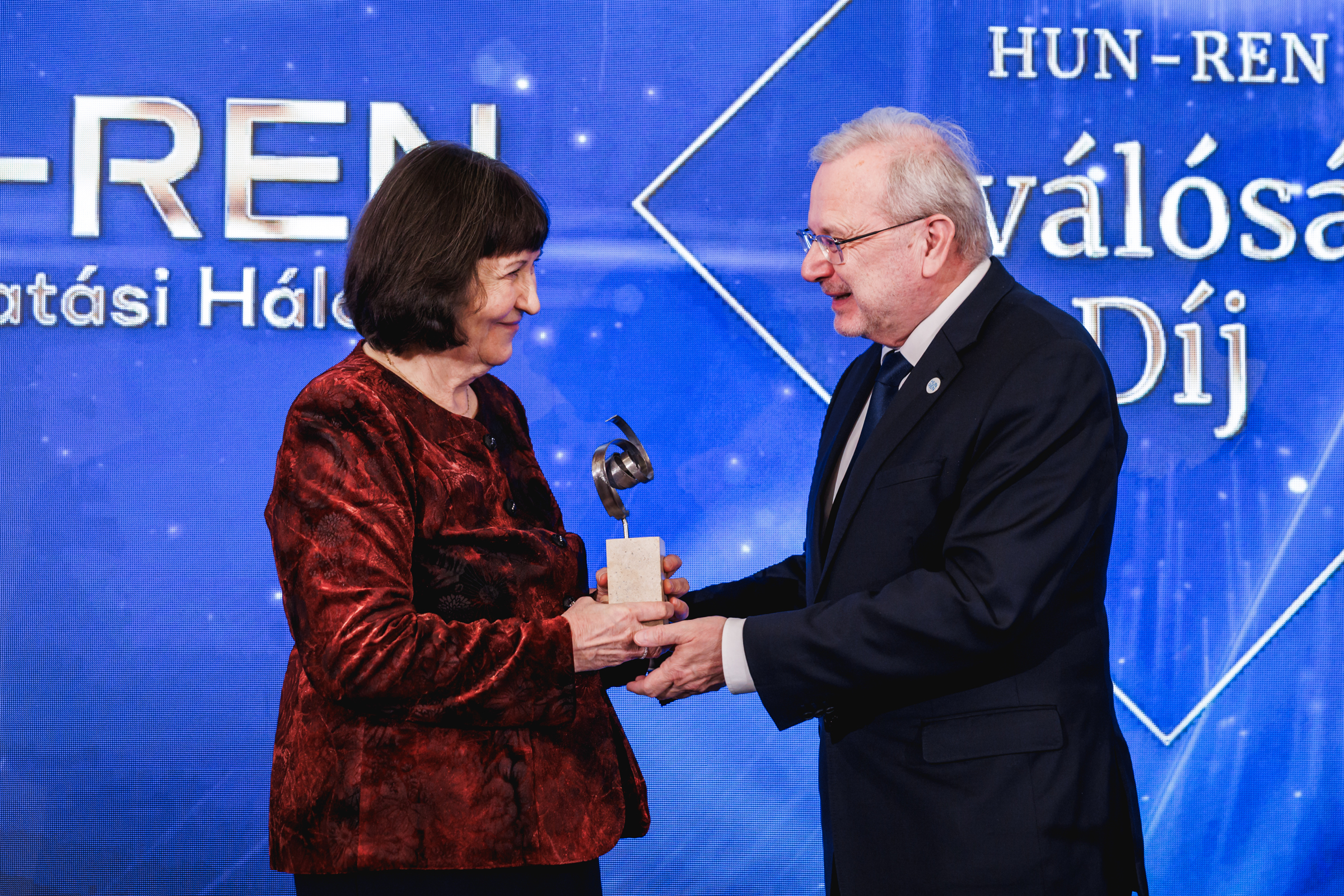With the first lead-lead collisions, the heavy-ion program of the CERN Large Hadron Collider has been launched with the involvement of HUN-REN Wigner RCP researchers
Up to a millionth of a second after the Big Bang, the universe was filled with an extremely hot and dense substance known as the quark-gluon plasma. At the CERN Large Hadron Collider (LHC), researchers create tiny droplets of this substance through high-energy heavy-ion ‒ lead nuclei ‒ collisions and study them within the framework of the ALICE experimental collaboration. Researchers from the HUN-REN Wigner Research Centre for Physics (HUN-REN Wigner RCP) actively contributed to the significant developments of the detector system in recent years.
Researchers began acquiring data from heavy-ion collisions on 28 September 2023. Just a few weeks later, they became the first ever to successfully capture data of 47,000 collisions per second at a collision energy of 5.36 ATeV. In the ALICE experiment, a data acquisition, compression, and transmission system designed by the HUN-REN Wigner RCP DAQ Group is used for this purpose. The data rate amounts to nearly 4 petabytes (3.68 PB) of data per day, approximately equivalent to the daily data generated by 2 billion Facebook users. The new data from Run 3 will enable physical measurements of unprecedented precision.

Image of one of the first lead-lead collisions, 27 September 2023.
Not long before, between 21 and 22 September 2023, Dr. Marco Van Leeuwen, the spokesperson for the CERN LHC ALICE experiment, visited the Hungarian ALICE Group in Budapest. During his visit, he participated in a symposium on Margitsziget (Margaret Island) commemorating the 121st anniversary of the birth of Jenő Wigner, where he gave a lecture on the latest results from ALICE. This was followed by a presentation summarizing domestic ALICE research by Barnaföldi Gergely Gábor. As a continuation of his visit, Marco Van Leeuwen had a discussion with Vértesi Róbert, who coordinates Wigner RCP researchers working on ALICE data analysis. Additionally, he visited the laboratories of the Innovative Gaseous Detectors Momentum Research Group, as well as the Wigner Data Center.
The visit contributed to strengthening the international collaboration between HUN-REN Wigner RCP and the ALICE experiment, as well as the development of close relationships between the Hungarian scientific community and CERN.
Funders:
OTKA K135515, FK 131979, NEMZ_KI: 2021-4.1.2-NEMZ_KI-2022-00018, 2021-4.1.2-NEMZ_KI-2022-00009, 2021-4.1.2-NEMZ_KI-2022-00007

Visit to the Wigner Data Center at the ALICE Analysis Facility. From right to left: Gergely Gábor Barnaföldi, Dr. Marco van Leeuwen, Gábor Bíró, Gyula Bencédi.
Marco van Leeuwen’s lecture

